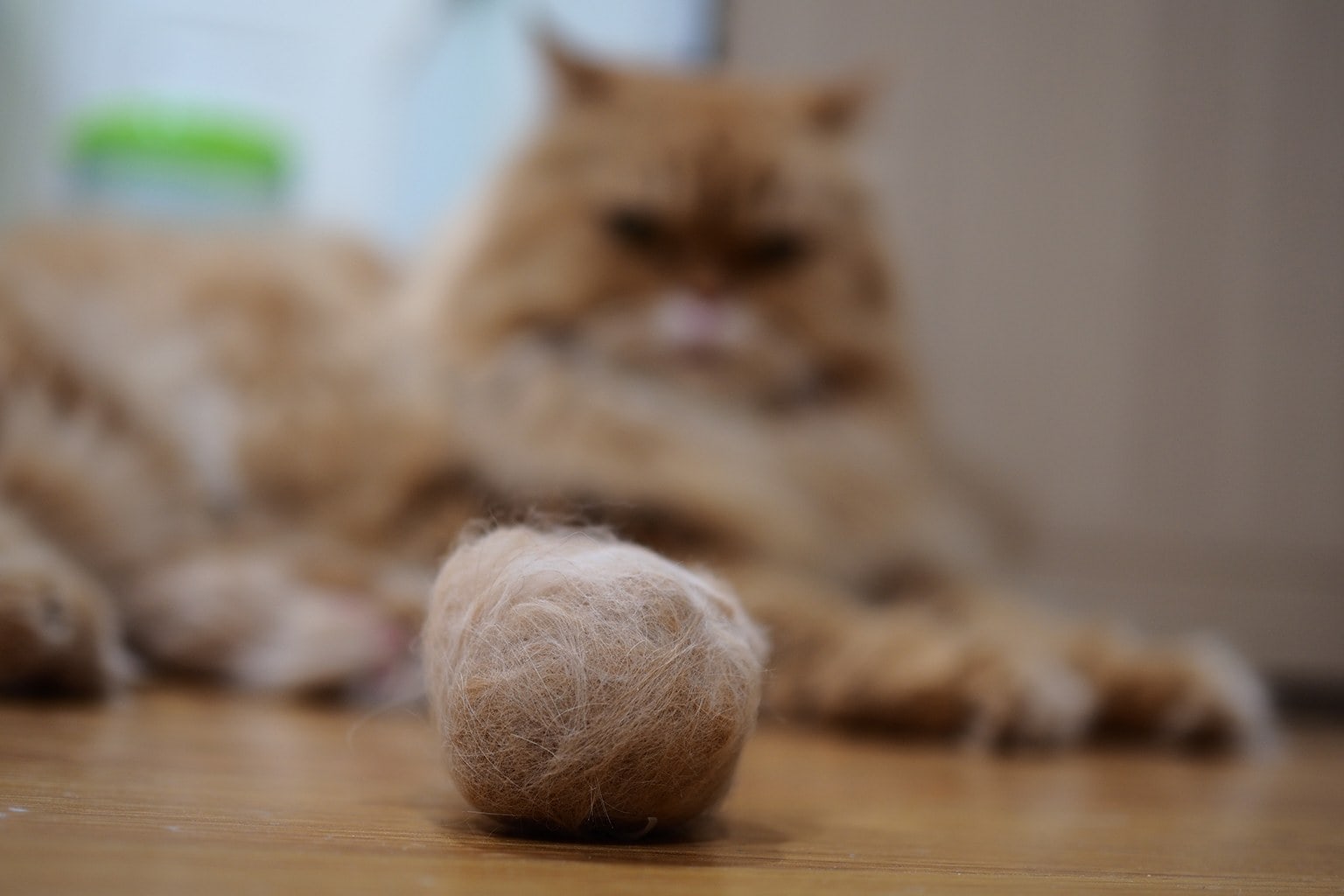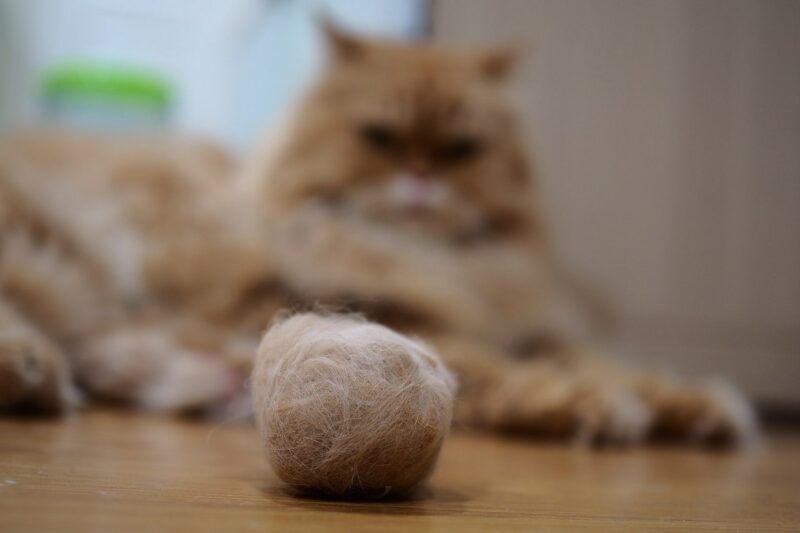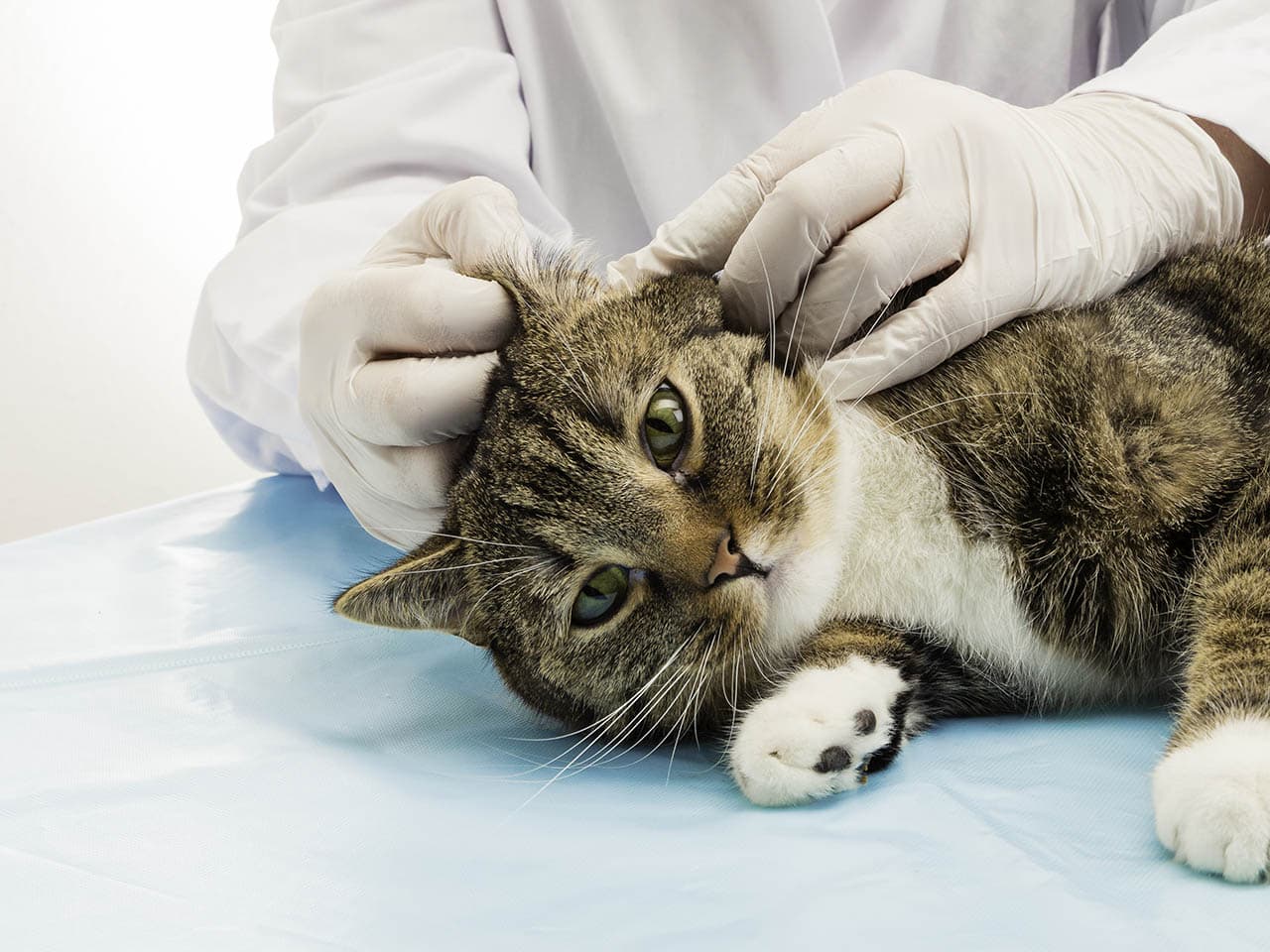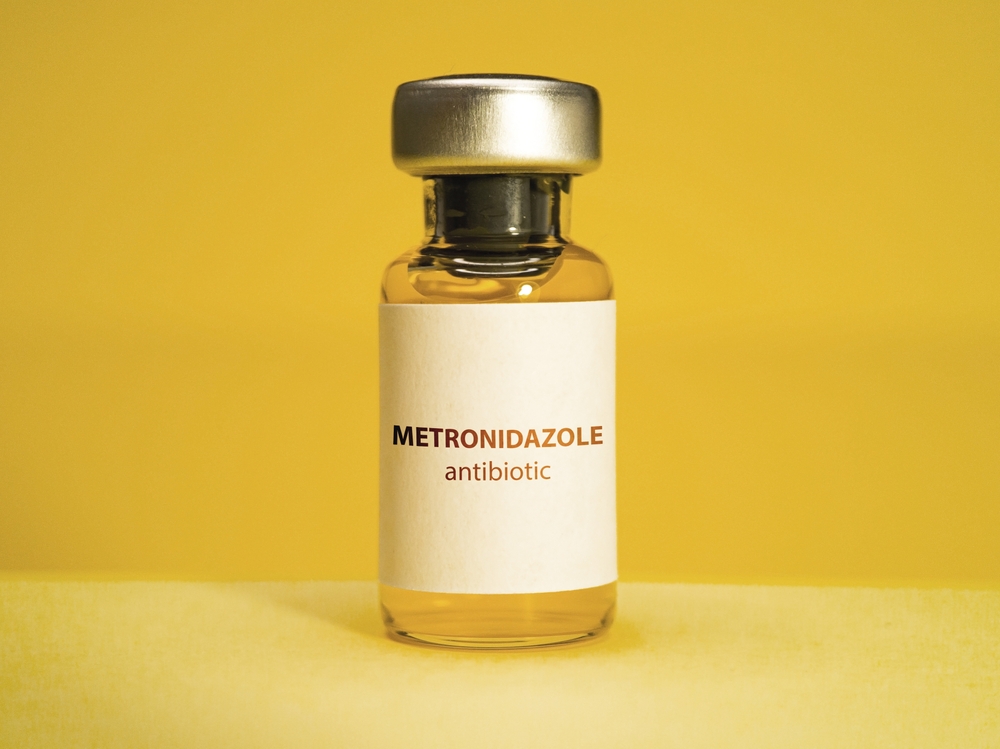If you stop to think about how much time your cat spends grooming themselves and consider that they ingest a little hair each time, hairballs seem discouragingly inevitable. In extreme cases, hairballs can even become gastrointestinal blockages, so you’re likely wondering about how to help minimize potentially problematic hairballs. To help alleviate digestive and grooming-related concerns that cause excessive or especially painful hairballs for your beloved kitty, check out some invaluable tips below.
The 7 Home Remedies for Cat Hairballs
1. Regular Grooming
If you don’t regularly brush your cat, you need to start. Frequent hairballs may be a sign that your cat has too much loose hair clinging to their body. When they groom themselves, dead and loose fur clings to their tongue and gets consumed. The solution is simple: brush your cat to reduce the sheer volume of loose fur before it gets eaten and turned into a hairball.
Look for helpful tools like grooming gloves and cat de-shedders at your local pet store. These are specifically designed to help remove excess dead fur while making grooming a pleasant experience for your cat. Try starting with very short but frequent sessions, especially if your cat isn’t used to being brushed.
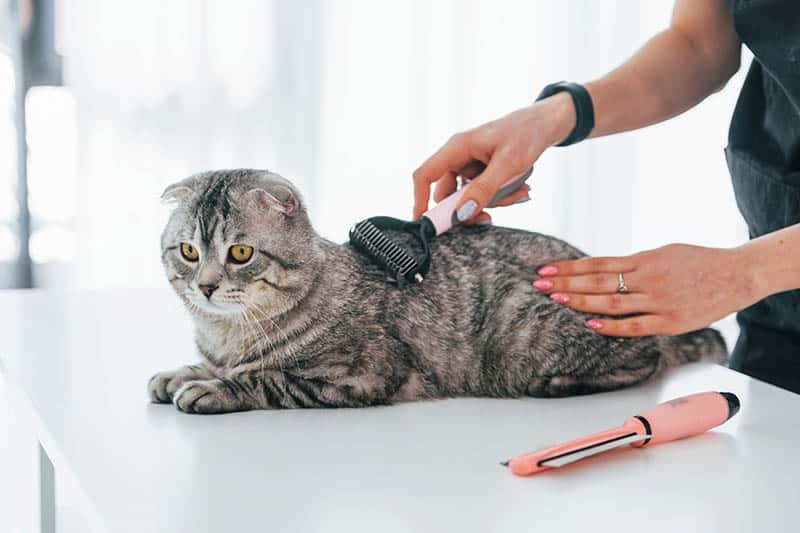
2. Increase Their Moisture Intake
If your cat is on a dry food diet, chances are good that there is a chronic dehydration state behind the hairball formation. Many cats are not effective water drinkers. Cats are actually meant to get their hydration from ingesting moisture-rich food, and they are not very effective at drinking water. Cats actually evolved this way; their ancestors would not have survived in the desert otherwise. Try incorporating moisture-rich foods into their daily regime. Fresh food is best, but wet food is also much higher in moisture content than dry food. Another way of enticing cats to drink more is by offering broths prepared without onion or garlic or by giving them access to a water fountain because cats are more naturally attracted to moving sources of water than stagnant ones.
3. Add Dietary Fiber
On the other end of the spectrum, very frequent hair accumulation in the stomach can occur when your cat doesn’t have enough fiber in their diet. Adding fiber might just be just the thing to help your cat’s bowels pass hairs. Hairball prevention cat food has increased fiber, but if you ask us, stick to the wet formulations rather than the dry ones.
Another option is adding some organic plain pumpkin to your cat’s meal. Pumpkin is an excellent source of fiber for your cat that will also add to their moisture ingestion.
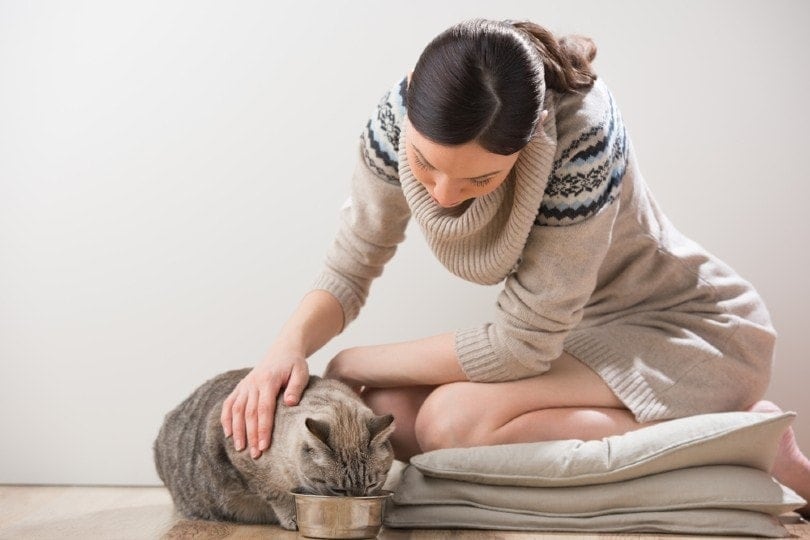
4. Supplement With Lecithin
Part of the reason behind hair accumulation and hairball aggravation is the oily gunk that gets stuck in between the hairs and in your cat’s stomach mucosa. Lecithin works as an emulsifier to help remove this gunk, breaking and passing existing hairballs while preventing new hairball formation. Two great sources of lecithin are egg yolks and soybeans. Buy in-shell pasteurized eggs and incorporate about half a raw egg yolk into your cat’s daily meals. Please consider that this will account for about 27 extra calories, so either try to get that kitty moving or make the necessary dietary adjustments with your vet’s help.
Besides the benefit of lecithin, egg yolks are also a source of choline, a nutrient that aids gastrointestinal motility. Egg yolk lecithin is also available in supplement form. Your veterinarian can help you choose the best way to incorporate some lecithin into your cat’s diet.
5. Check Their Behavior
Cats normally groom themselves a lot but take it to new and even painful extremes when they’re stressed or anxious. Oftentimes, overgrooming is the reason a cat is predisposed to hairball problems. If this is the case, the issue needs to be addressed. A complete behavioral management plan, together with the necessary environmental adjustments, can help to redirect their aberrant overgrooming behavior.
Close observation will help you recognize the possible reasons behind your cat’s stress. Environmental enrichment and positive reinforcement methods are powerful tools to extinguish some aberrant behaviors. Overgrooming is a similar behavior to destructive chewing or digging in dogs, and you might need to get a professional behaviorist involved to help your cat overcome this problem.
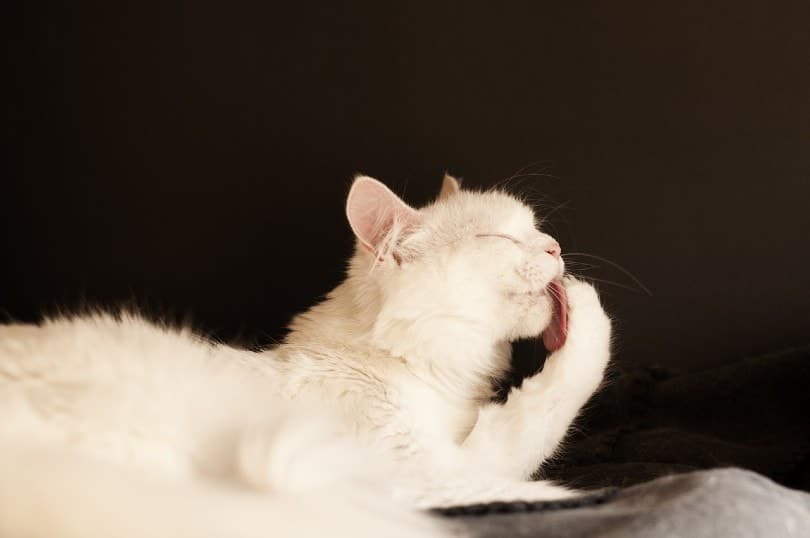
6. Grow Cat Grass
We don’t typically support cats eating your houseplants, but cat grass is a notable exception. Grass has fiber and is thought to help your cat throw up hairballs, and it’s very easy to grow small patches yourself for your cat to pursue as a healthy snack. Besides, cat grass is a great way to provide environmental enrichment and sensorial stimulation to your cat. A busy and entertained cat is less likely to overgroom.
7. Petroleum Jelly
Petroleum jelly is a common human product that can literally help smooth the passing of hairballs for your kitty. It is actually one of the ingredients in commercially available hairball remedies. Simply smear a tiny amount on your cat’s paw and watch them lick it. Just a small amount will lubricate their digestive tract, facilitating the passage of hairballs. While this old-school remedy is effective, we recommend using it sparingly and instead focusing on making the necessary changes to prevent hairball formation in your cat.
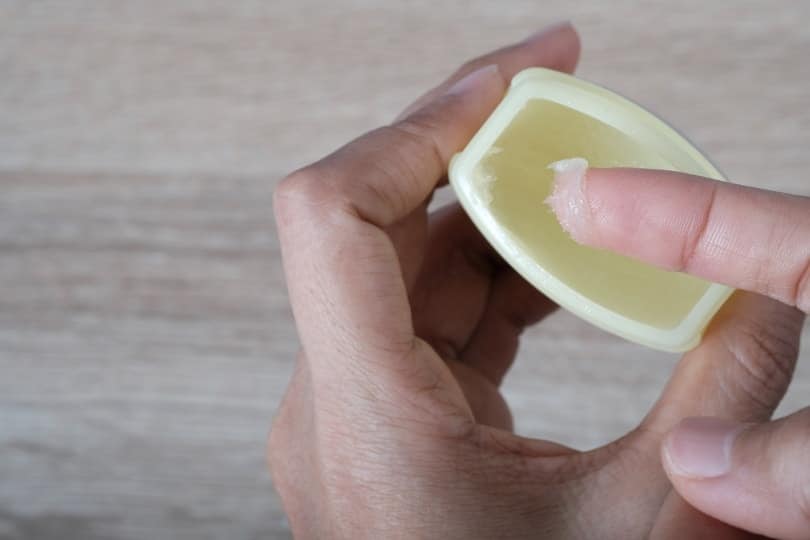

Conclusion
Hairballs can be hard to pass for your cat, but don’t just watch them struggle! Give them a good brushing, review their diet and habits to help reduce the incidence of hairballs, and consider having your vet help you decide how to use the options presented here to help prevent hairball formation in your cat.
Featured Image Credit: Montakan Wannasri, Shutterstock

